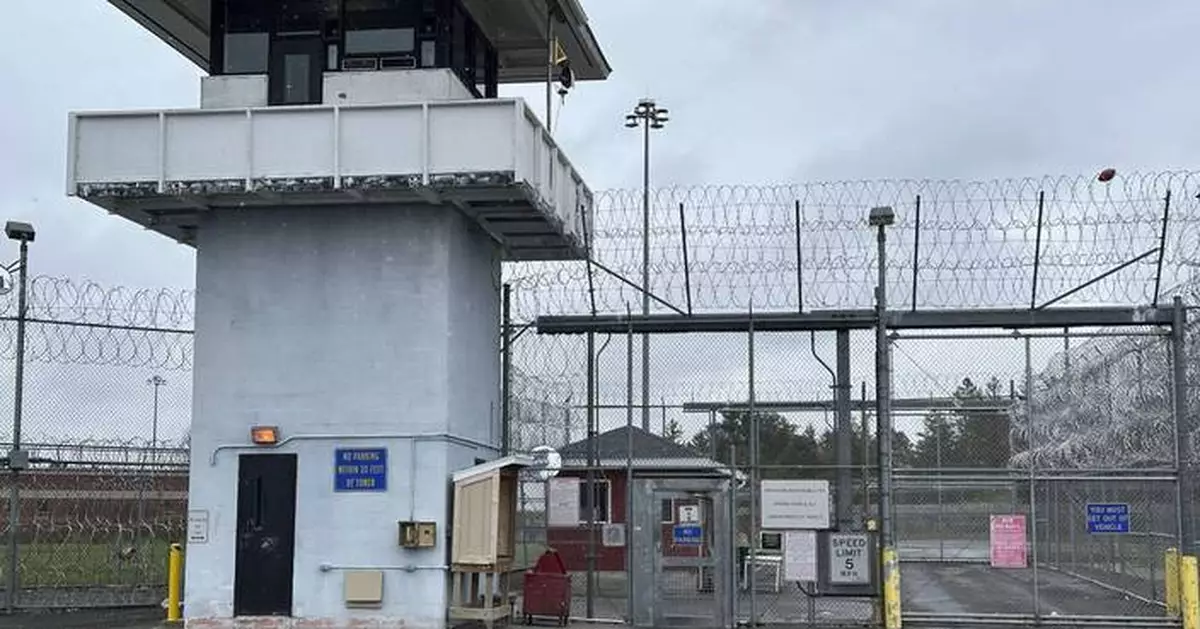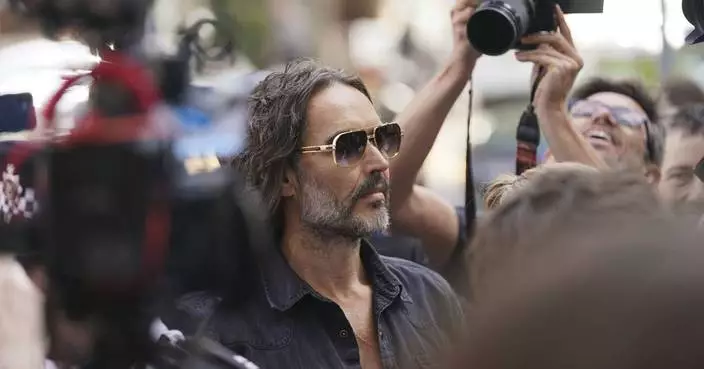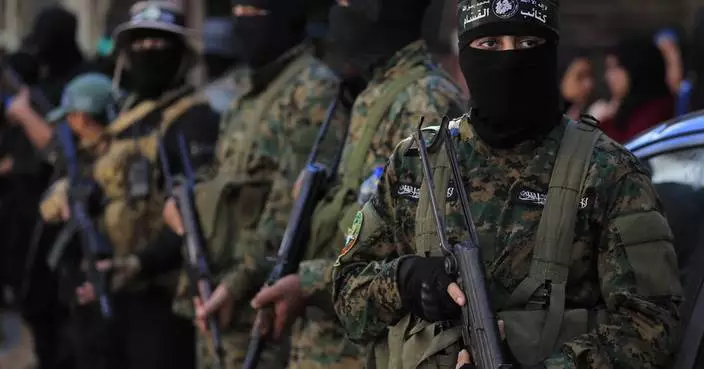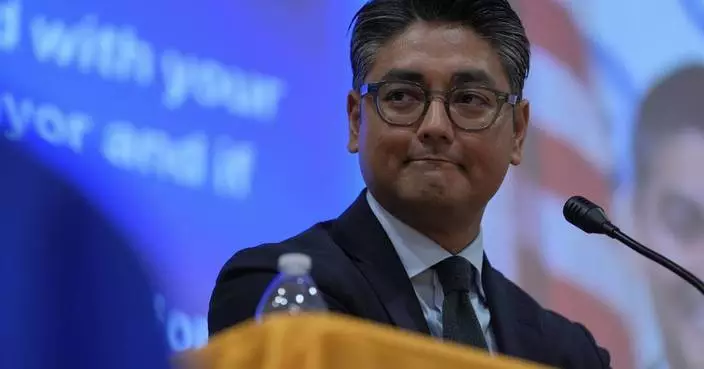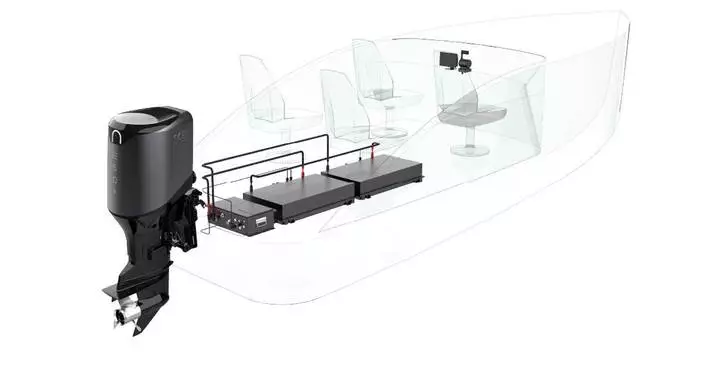UTICA, N.Y. (AP) — Ten New York prison guards were charged Wednesday in connection with the fatal beating of a 22-year-old inmate last month — including two charged with murder. It's the second time a group of correctional officers in the state was indicted for a death behind bars this year.
Messiah Nantwi, a prisoner at the Mid-State Correctional Facility, died March 1 from injuries he sustained in a series of beatings by guards that began in his room and continued even when he was lying handcuffed on the floor of the infirmary, the indictment says.
Six of the officers charged Wednesday were accused of assaulting Nantwi, while the other four were accused of participating in a cover-up that included filing false reports, plotting to plant a makeshift knife and cleaning up blood in Nantwi’s room in an effort to destroy evidence. All entered not guilty pleas.
Nantwi’s death came several months after Robert Brooks was fatally beaten at the Marcy Correctional Facility just across the street from the Mid-State prison. Six guards have pleaded not guilty to murder charges in Brooks’ death and other prison employees have been charged.
The Utica-area facility was one of many state prisons struggling to function during a three-week wildcat strike by guards upset over working conditions, which forced the governor to send in National Guard troops to maintain operations. Incarcerated people and their advocates complained that services and conditions deteriorated during the walkout, while the indictment notes the guards had little training on how to deal with prisoners.
Mid-State guards Jonah Levi and Caleb Blair are charged with second-degree murder. They and three others — Thomas Eck, Craig Klemick and Daniel Burger — also are charged with first-degree manslaughter. Two sergeants, Francis Chandler and David Ferrone, are charged with second-degree manslaughter, accused of doing nothing to stop the assaults while supervising.
Levi and Blair were part of an emergency response team called to Nantwi’s room to help National Guard members, the indictment says. At a news conference after the hearing, Onondaga County District Attorney William Fitzpatrick said the inmate drew the Guard members' concern when he interjected into another inmate's effort to obtain medication and was resistant to a prisoner headcount.
Fitzpatrick said the situation had resolved itself by the time the response team arrived, but the correctional officers spoke with the Guard members for only a few seconds before entering Nantwi's room.
Nantwi's hands were raised when the officers first entered the room but he objected to being handcuffed for no apparent reason and grabbed a guard’s vest, the indictment says. Several guards immediately rained blows on his head and body using their fists, batons and boots, the document says. The attack intensified when Nantwi bit Blair and Eck on their hands well after guards began assaulting him, according to Fitzpatrick and the indictment.
Nantwi became unresponsive and guards transported him toward the infirmary, but he was assaulted a second time in a stairwell and “dumped in a holding cell at the infirmary and further assaulted” by Blair, the indictment says.
Fitzpatrick added that guards on the team were not wearing mandated body cameras, while others working there either turned off their cameras or “simply looked the other way.”
Guards met a local diner the next morning to develop and coordinate a false narrative, an attempt at an “amateurish and ineffective” cover-up, Fitzpatrick said.
Part of the cover-up involved taking a weapon that had been confiscated in an unrelated incident and planting it in Nantwi's room, the indictment alleges. Ferrone was caught discussing the weapon on a bodycam hanging up in the men’s room at the infirmary, it says. When he spotted the camera, he “uttered an expletive.”
In addition to the 10 guards, six other correctional officers agreed to cooperate with the investigation, Fitzpatrick said. Two will plead guilty to felonies and four will plead guilty to misdemeanors.
Prison officials said all 10 guards charged Wednesday have either resigned or been suspended without pay.
Gov. Kathy Hochul has ordered the commissioner to begin the termination process for workers involved in Nantwi’s death.
Nantwi entered the state prison system last May and had been serving a five-year sentence for second-degree criminal possession of a weapon related to an exchange of gunfire with police officers in 2021. He was shot multiple times, while the officers were uninjured.
Prosecutors in Manhattan say Nantwi shot and killed Jaylen Duncan, 19, on a Harlem street in April 2023. The following evening, they say, he shot and killed Brandon Brunson, 36, at a Harlem smoke shop after an argument.
Collins contributed from Hartford, Connecticut.
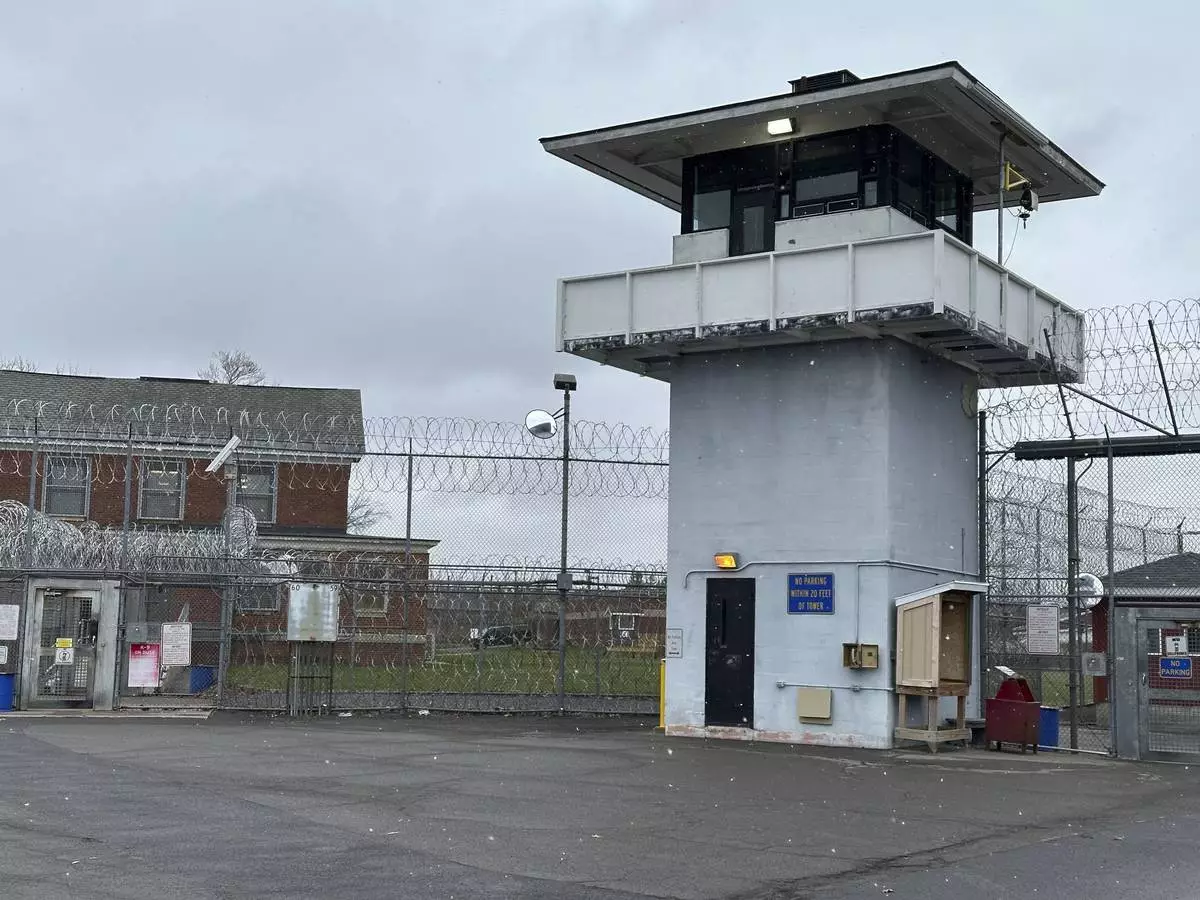
The Mid-State Correctional Facility in Marcy, N.Y. is shown on Wednesday, April 16, 2025 (AP Photo/Michael Hill)
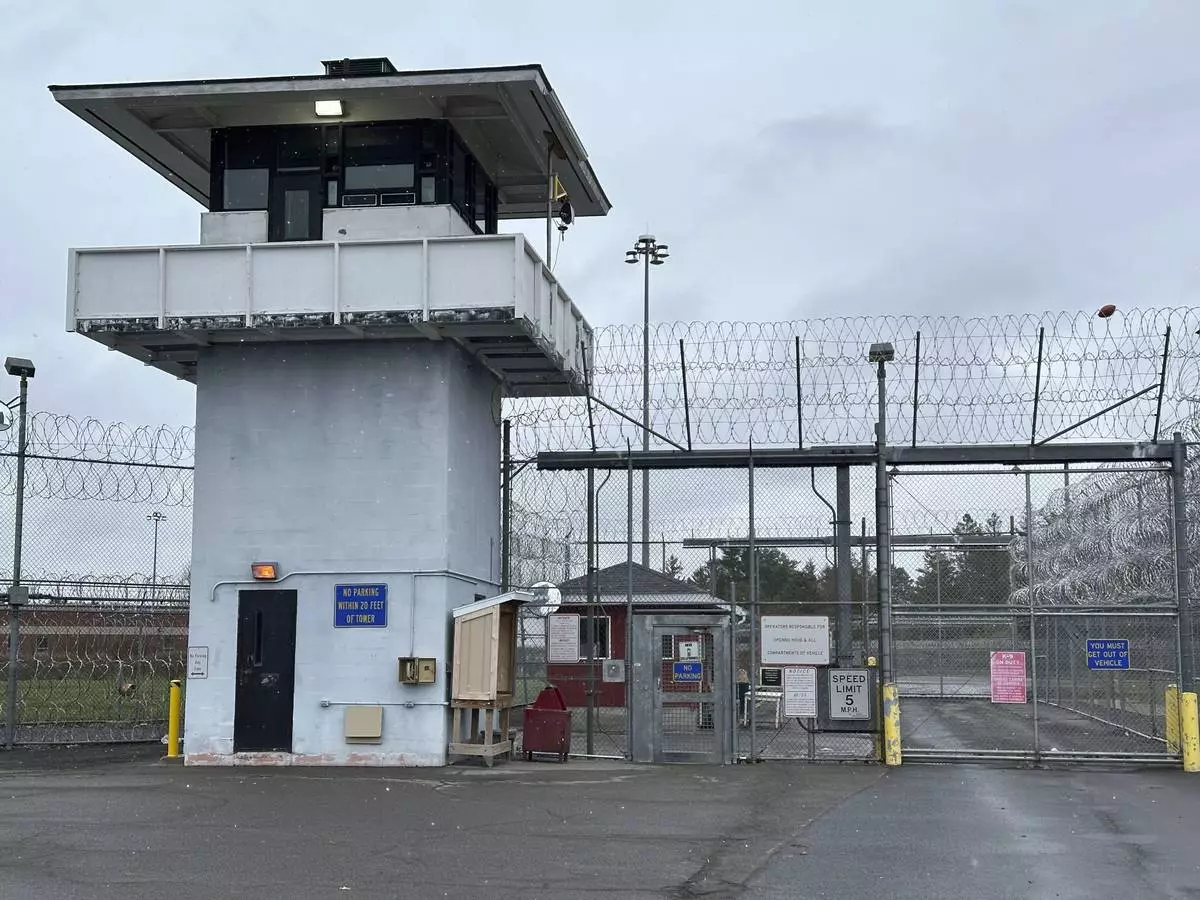
The Mid-State Correctional Facility in Marcy, N.Y. is shown on Wednesday, April 16, 2025 (AP Photo/Michael Hill)
VATICAN CITY (AP) — “Conclave” the film may have introduced moviegoers to the spectacular ritual and drama of a modern conclave, but the periodic voting to elect a new pope has been going on for centuries and created a whole genre of historical trivia.
Here are some facts about conclaves past, derived from historical studies including Miles Pattenden's “Electing the Pope in Early Modern Italy, 1450–1700,” and interviews with experts including Elena Cangiano, an archeologist at Viterbo's Palazzo dei Papi (Palace of the Popes).
In the 13th century, it took almost three years — 1,006 days to be exact — to choose Pope Clement IV's successor, making it the longest conclave in the Catholic Church’s history. It's also where the term conclave comes from — "under lock and key," because the cardinals who were meeting in Viterbo, north of Rome, took so long the town's frustrated citizens locked them in the room.
The secret vote that elected Pope Gregory X lasted from November 1268 to September 1271. It was the first example of a papal election by “compromise,” after a long struggle between supporters of two main geopolitical medieval factions — those faithful to the papacy and those supporting the Holy Roman Empire.
Gregory X was elected only after Viterbo residents tore the roof off the building where the prelates were staying and restricted their meals to bread and water to pressure them to come to a conclusion. Hoping to avoid a repeat, Gregory X decreed in 1274 that cardinals would only get “one meal a day” if the conclave stretched beyond three days, and only “bread, water and wine” if it went beyond eight. That restriction has been dropped.
Before 1274, there were times when a pope was elected the same day as the death of his predecessor. After that, however, the church decided to wait at least 10 days before the first vote. Later that was extended to 15 days to give all cardinals time to get to Rome. The quickest conclave observing the 10-day wait rule appears to have been the 1503 election of Pope Julius II, who was elected in just a few hours, according to Vatican historian Ambrogio Piazzoni. In more recent times, Pope Francis was elected in 2013 on the fifth ballot, Benedict XVI won in 2005 on the fourth and Pope Pius XII won on the third in 1939.
The first conclave held under Michelangelo's frescoed ceiling in the Sistine Chapel was in 1492. Since 1878, the world-renowned chapel has become the venue of all conclaves. “Everything is conducive to an awareness of the presence of God, in whose sight each person will one day be judged,” St. John Paul II wrote in his 1996 document regulating the conclave, “Universi Dominici Gregis.” The cardinals sleep a short distance away in the nearby Domus Santa Marta hotel or a nearby residence.
Most conclaves were held in Rome, with some taking place outside the Vatican walls. Four were held in the Pauline Chapel of the papal residence at the Quirinale Palace, while some 30 others were held in St. John Lateran Basilica, Santa Maria Sopra Minerva or other places in Rome. On 15 occasions they took place outside Rome and the Vatican altogether, including in Viterbo, Perugia, Arezzo and Venice in Italy, and Konstanz, Germany, and Lyon, France.
Between 1378-1417, referred to by historians as the Western Schism, there were rival claimants to the title of pope. The schism produced multiple papal contenders, the so-called antipopes, splitting the Catholic Church for nearly 40 years. The most prominent antipopes during the Western Schism were Clement VII, Benedict XIII, Alexander V, and John XXIII. The schism was ultimately resolved by the Council of Constance in 1417, which led to the election of Martin V, a universally accepted pontiff.
The cloistered nature of the conclave posed another challenge for cardinals: staying healthy. Before the Domus Santa Marta guest house was built in 1996, cardinal electors slept on cots in rooms connected to the Sistine Chapel. Conclaves in the 16th and 17th centuries were described as “disgusting” and “badly smelling,” with concern about disease outbreaks, particularly in summer, according to historian Miles Pattenden. “The cardinals simply had to have a more regular and comfortable way of living because they were old men, many of them with quite advanced disease,” Pattenden wrote. The enclosed space and lack of ventilation further aggravated these issues. Some of the electors left the conclave sick, often seriously.
Initially, papal elections weren’t as secretive, but concerns about political interference soared during the longest conclave in Viterbo. Gregory X decreed that cardinal electors should be locked in seclusion, “cum clave” (with a key), until a new pope was chosen. The purpose was to create a totally secluded environment where the cardinals could focus on their task, guided by God’s will, without any political interference or distractions. Over the centuries, various popes have modified and reinforced the rules surrounding the conclave, emphasizing the importance of secrecy.
Pope John XII was just 18 when he was elected in 955. The oldest popes were Pope Celestine III (elected in 1191) and Celestine V (elected in 1294) who were both nearly 85. Benedict XVI was 78 when he was elected in 2005.
There is no requirement that a pope be a cardinal, but that has been the case for centuries. The last time a pope was elected who wasn’t a cardinal was Urban VI in 1378. He was a monk and archbishop of Bari. While the Italians have had a stranglehold on the papacy over centuries, there have been many exceptions aside from John Paul II (Polish in 1978) and Benedict XVI (German in 2005) and Francis (Argentine in 2013). Alexander VI, elected in 1492, was Spanish; Gregory III, elected in 731, was Syrian; Adrian VI, elected in 1522, was from the Netherlands.
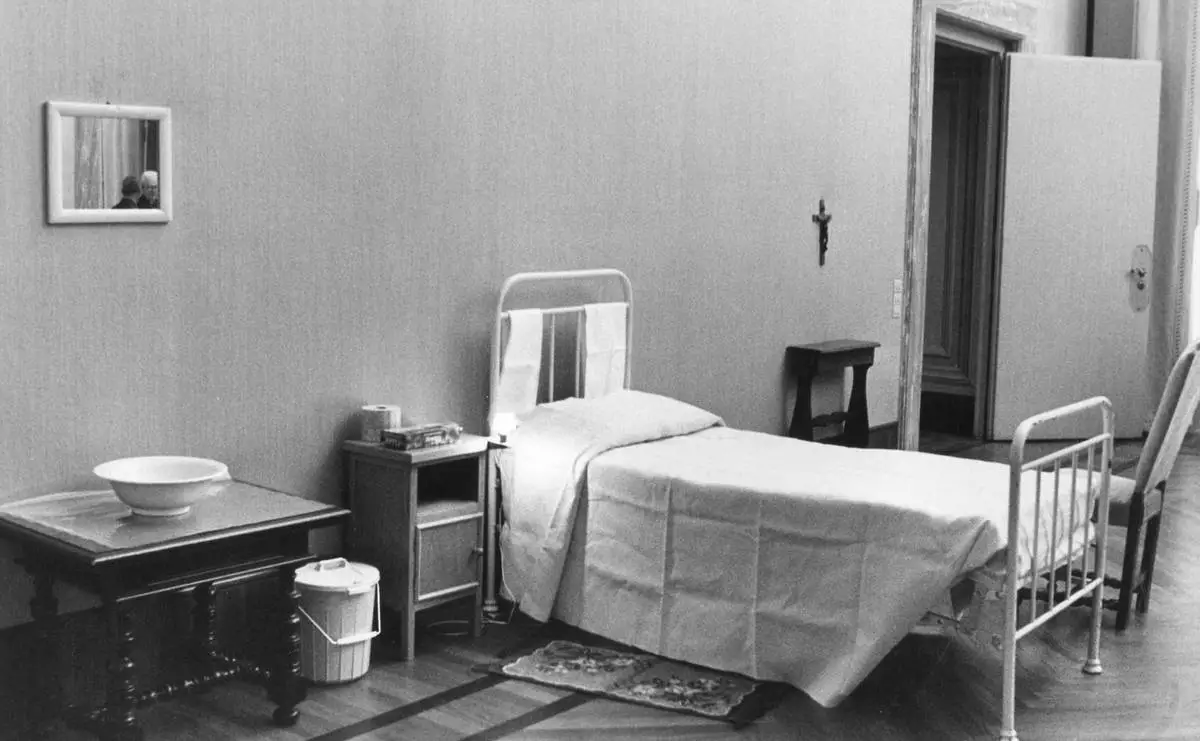
FILE - One of the cells in which a Cardinal will live during the Conclave, at the Vatican, Aug. 23, 1978. (AP Photo, File)
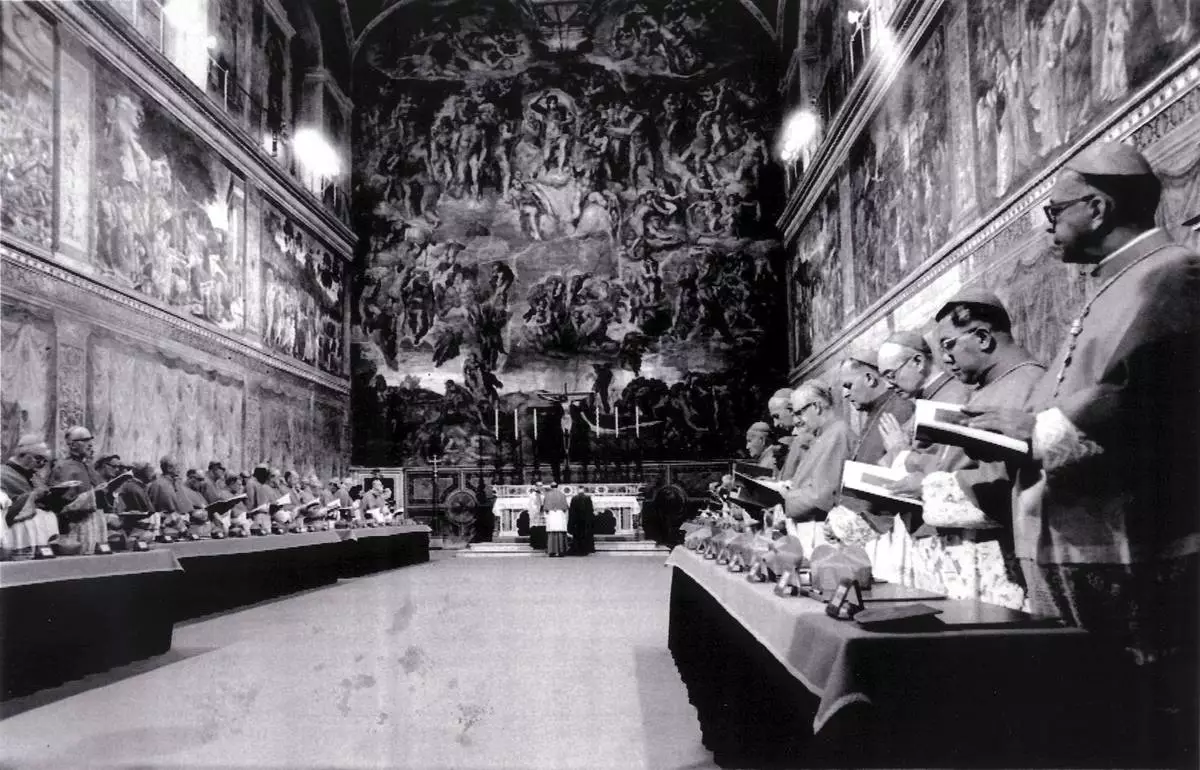
FILE - Cardinals stand in prayer inside the Sistine Chapel after they entered the conclave area for electing the successor of late John Paul I. In the background on the wall Michelangelo's famous fresco "The Last Judgement", in this Oct. 14, 1978 file photo. (AP Photo/Pool, File)
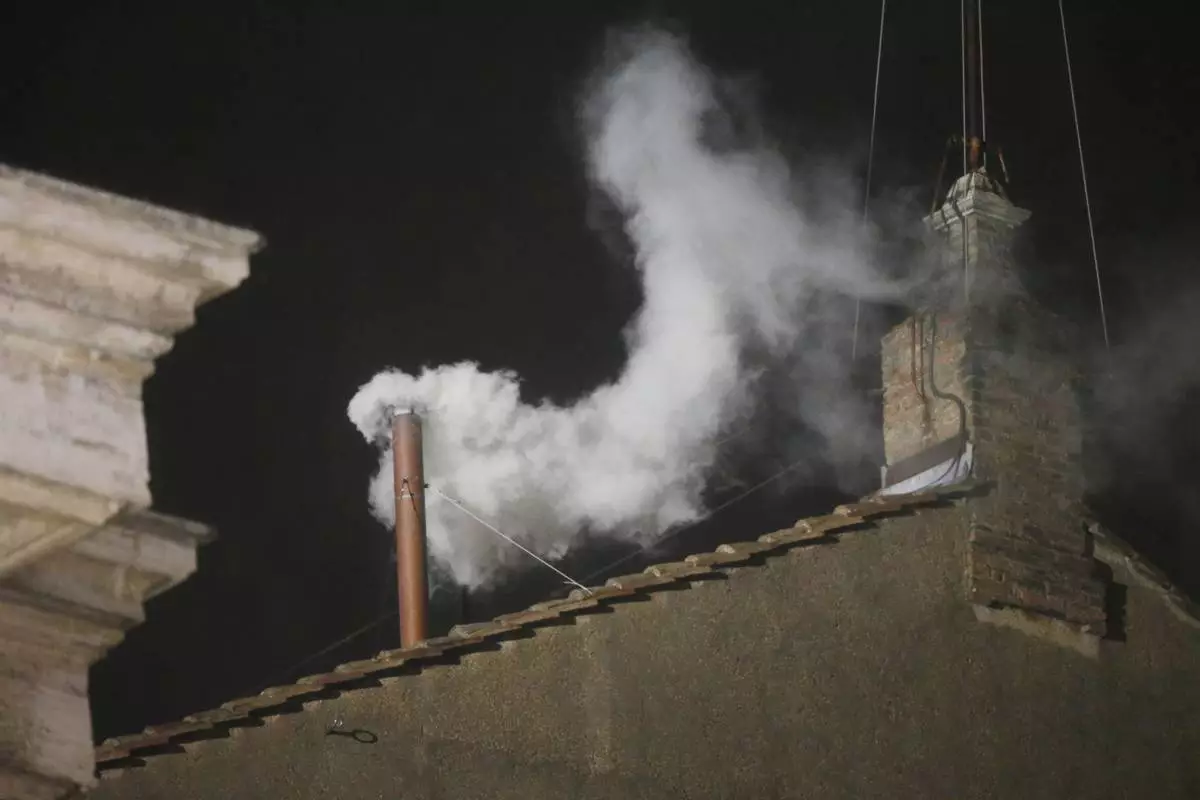
FILE - White smoke is seen billowing out from the chimney of the Sistine Chapel and announcing that a new pope has been elected on Wednesday, March 13, 2013. (AP Photo/Gregorio Borgia, File)
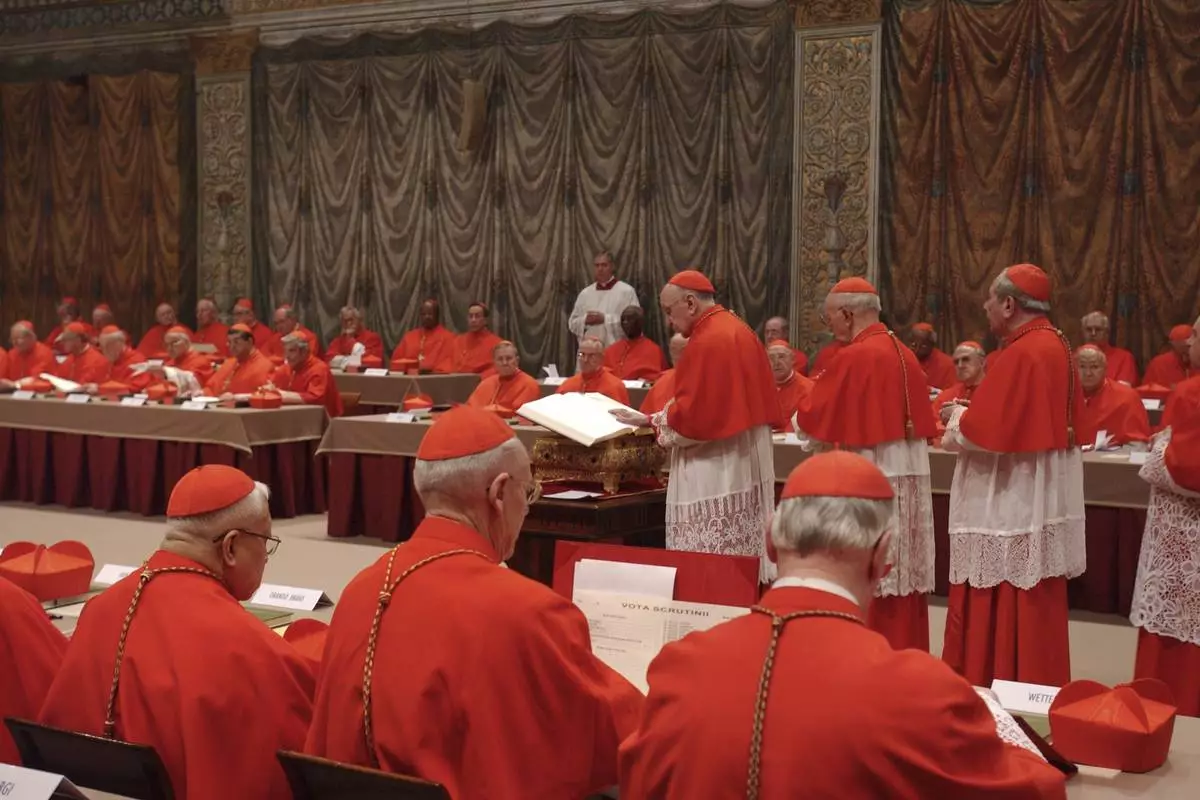
FILE - Italian Cardinal Giacomo Biffi, center, takes an oath at the beginning of the conclave to elect the next pope in the Sistine Chapel at the Vatican, Monday, April 18, 2005. (AP Photo/Osservatore Romano via AP, File)
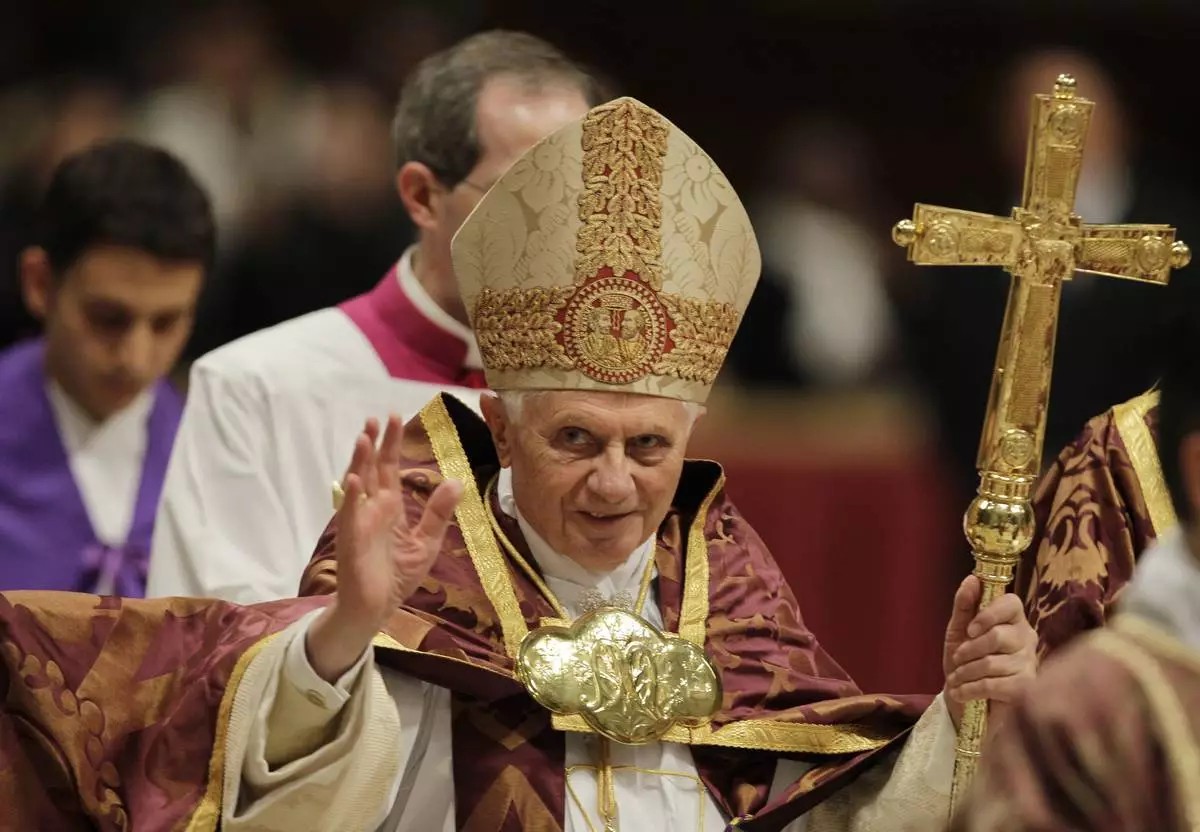
FILE - Pope Benedict XVI blesses the faithful as he arrives at St. Peter's Basilica in the Vatican, Dec. 16, 2010. (AP Photo/Alessandra Tarantino, File)
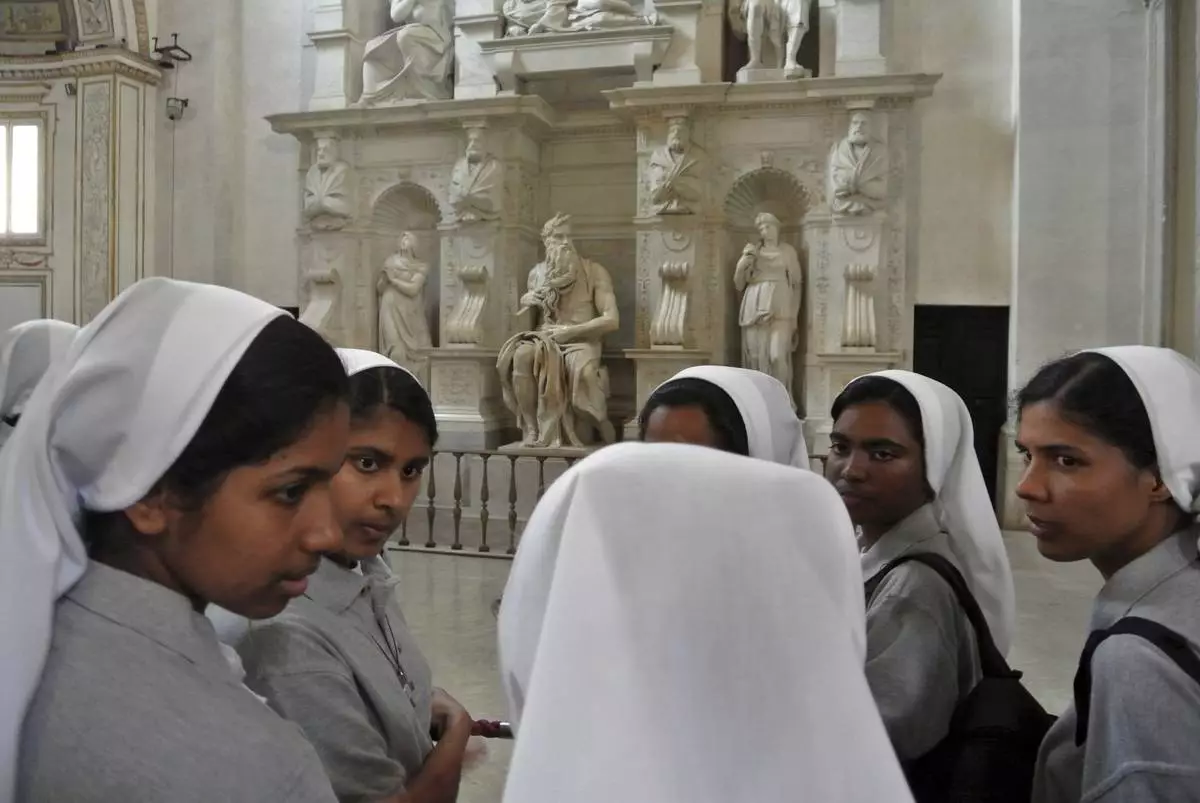
FILE - Nuns talk in front of Italian Renaissance artist Michelangelo Buonarroti's Moses statue, part of a funerary monument he designed for Pope Julius II inside San Pietro in Vincoli Basilica in Rome, July 2, 2013. (AP Photo/Gregorio Borgia, File)
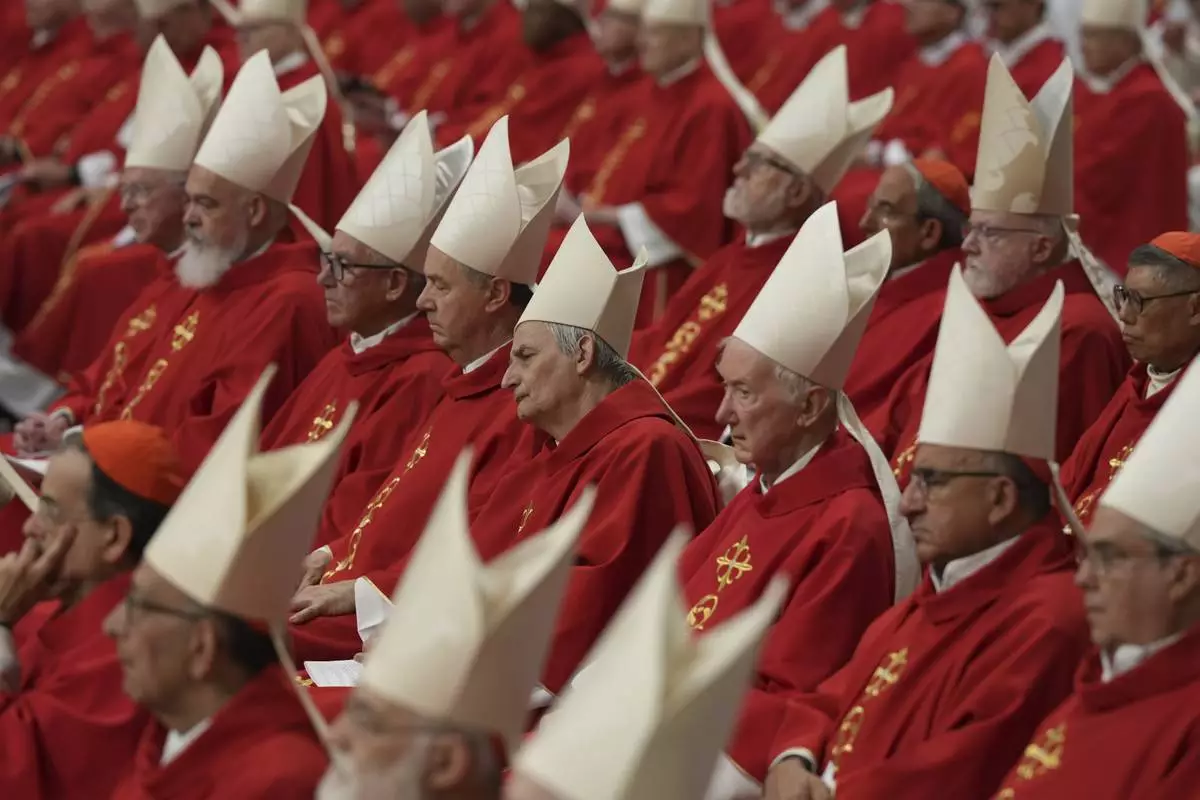
Cardinal Matteo Zuppi, centre, attends a mass on the third of nine days of mourning for late Pope Francis, in St. Peter's Basilica at the Vatican, Monday, April 28, 2025. (AP Photo/Andrew Medichini)
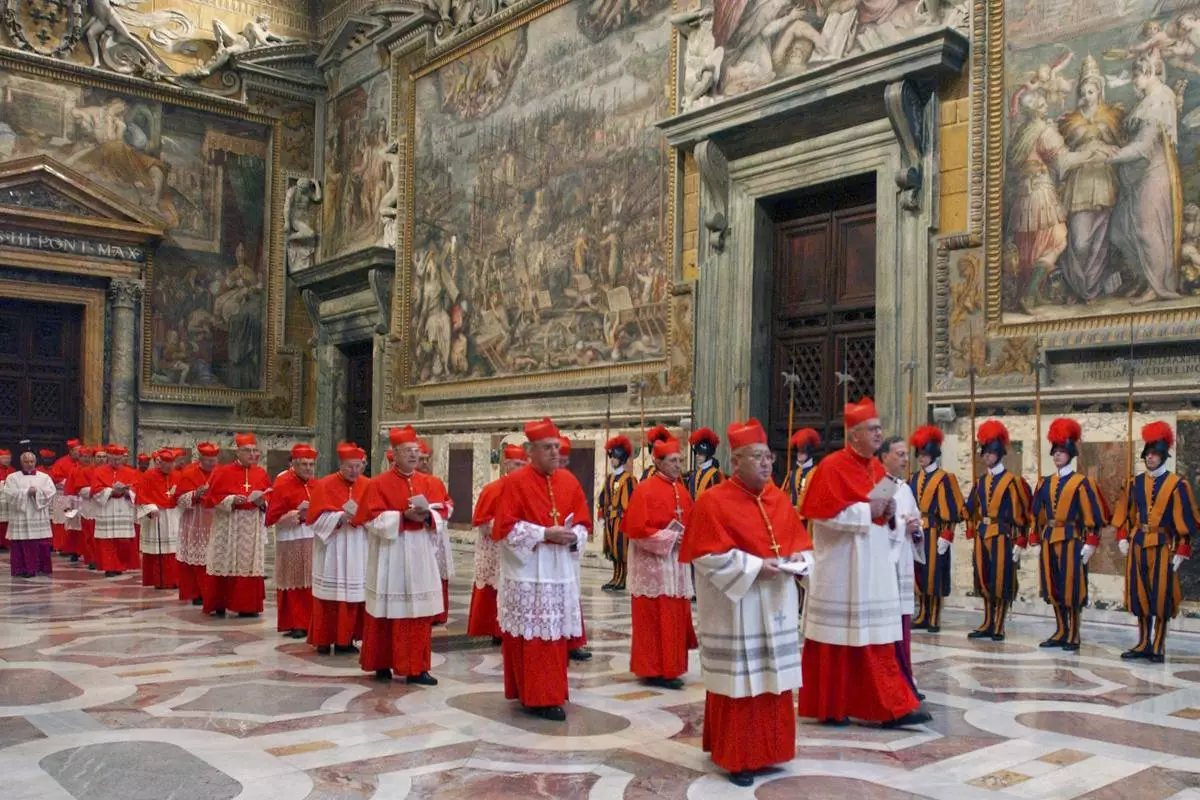
FILE - Cardinals walk in procession to the Sistine Chapel at the Vatican, at the beginning of the conclave, April 18, 2005. (Osservatore Romano via AP, File)




